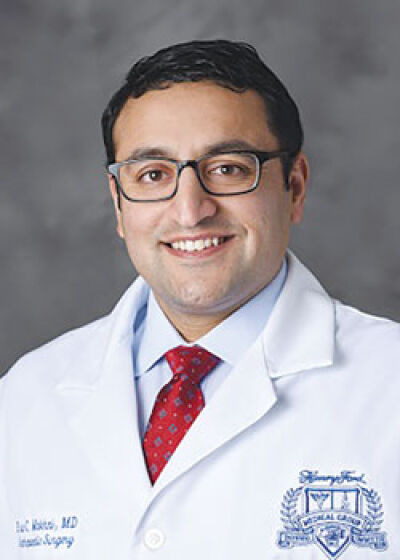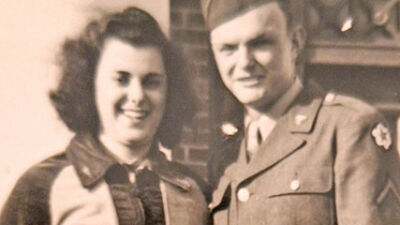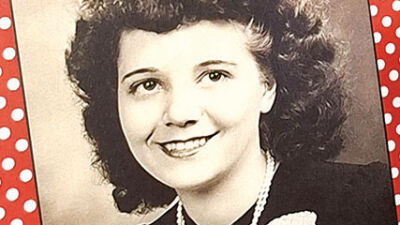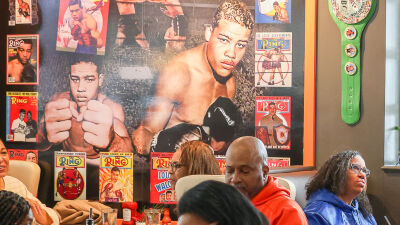
Dr. Eric Makhni, of Henry Ford Health, specializes in both reconstruction and repair of the ulnar collateral ligament.
Photo provided by Salvatore Giacona
METRO DETROIT — It’s consistently the talk of Major League Baseball. Every year it seems there’s a major blow to a pennant-chasing team as its ace is shut down for the year due to Tommy John surgery.
But as new research comes along, the perception and risk management may be continuing to trend upward for a surgery that was once looked at as potentially career-ending for professional athletes. Instead of a complete reconstruction of the ulnar collateral ligament, a repair surgery could be the ticket for a faster recovery.
“The recovery our study has shown can take a 14- to 16-month recovery to reach a player’s level, but what we’ve found is that we can reduce that time,” Dr. Eric Makhni said.
Makhni, a sports medicine orthopedic surgeon at Henry Ford Health, is currently a team physician for the Detroit Lions and has had experience with the Chicago Bulls and the Chicago White Sox as a team physician.
In his six years at Henry Ford Health, Makhni has specialized in alternative techniques in Tommy John surgery, which was made famous in 1974 when Los Angeles Dodgers pitcher Tommy John was the first player to undergo the surgery from Dodgers team physician Dr. Frank Jobe.
The procedure Makhni specializes in, ulnar collateral ligament — UCL — reconstruction, focuses on withdrawing a healthy tendon from the body and using it to replace the arm’s torn ligament. Holes are drilled into the bone above and below the elbow, and the healthy tendon is then threaded through. Makhni has conducted a multitude of Tommy John reconstruction surgeries, but has also implemented a technique to repair the tendon as opposed to reconstruction.
“Primary repair of the UCL has really changed the game in the way we care for these injuries,” Makhni said in a prepared statement. “New techniques have emerged that allow us to actually save the athlete’s native UCL and simply repair it; the UCL is typically supported with an internal brace made of nonabsorbable suture tape that helps protect the repaired ligament while it heals.”
The repair technique allows the protected ligament to undergo a faster recovery and allows pitchers to return to the mound sooner than they might return with a reconstruction.
With that being said, Makhni hopes that young players begin to have a better understanding of their limits and what their arms can take. People between the ages of 15 and 19 have accounted for nearly 57% of Tommy John surgeries, according to a 2015 study published by the American Orthopaedic Society for Sports Medicine.
“What we know is that over the past several years of adolescence, needing Tommy John surgery has increased dramatically,” Makhni said during an interview. “The reason we’re noticing these factors is, well, the one big thing is the emphasis on kids throwing hard; my group has done research on force and torque, and that seems to be the reason.”
One pitcher who fell in the age range of the statistical majority was Grosse Pointe North High School’s Nic Good.
Good, a 19-year-old left-handed pitcher for Bowling Green State University, injured his elbow in his senior year of high school.
Good began to feel his hand and forearm cramp during the first round of districts, and it was only days later when the final blow came.
“In the third inning, it was just one pitch,” Good said. “I felt it and tried to throw one more just to see if it was one pitch that hurt, and I beaned the kid right in the back. I lost my control and lost my velocity; I kind of knew on that one pitch.”
Good, who had never had surgery before, visited four different doctors before coming across Makhni.
While every doctor seemed to lay out the same timetable for a return, Good said there was something about Makhni that separated him from the rest.
“He seemed like he had done a lot of research on it and had success in the past, and he just really made me feel the most comfortable in the office,” Good said. “He made me feel at home.”
With Good’s ligament detaching from the bone and not completely torn, Makhni determined Good was a prime candidate for the UCL repair.
“When I heard that, I thought I might as well go with the repair, because Dr. Makhni said I was a really good candidate for it.”
Good underwent surgery in July 2021 and was medically cleared in March 2022 to begin throwing again.
With one out and the bases loaded, Good made his collegiate debut April 3 against the University of Akron and earned the win as he tallied three strikeouts in 1 1/3 innings of work.
“I had nerves going, but the adrenaline was pumping, so that kind of took over,” Good said.
Good finished the season 2-1 with six strikeouts in 16 innings of work, and he is more confident than ever heading into his sophomore year.
“Higher than ever, for sure,” Good said. “Arm feels better than ever and stronger than ever.”
It was a long ride for Good, but Makhni’s procedure was exactly what Good needed to return to full strength.
Along with his comfort and familiarity with Makhni and his work, Good said there was something else that motivated him to come back strong.
“You know growing up Tommy John was the thing that you don’t want, obviously; that’s the surgery everyone knows about that used to be a deal breaker, but recently I’ve seen a lot of young kids get the surgery,” Good said. “Actually, two kids from my summer team two years ago had surgery on the exact same day as me, so talking to them and all that calmed me down a little bit and made me feel like I was going to come back from this.”
 Publication select ▼
Publication select ▼





















